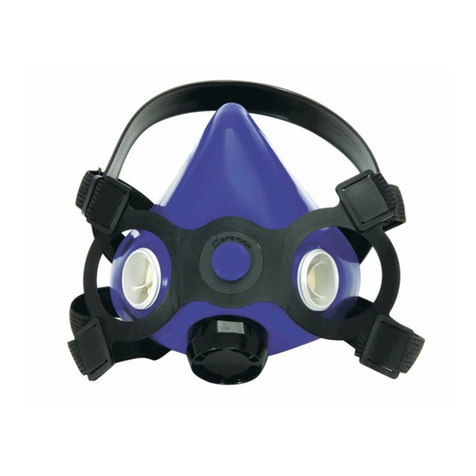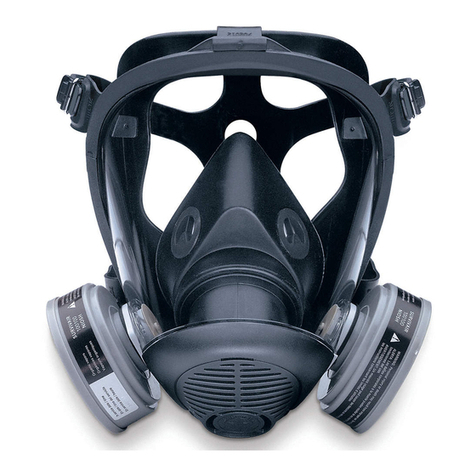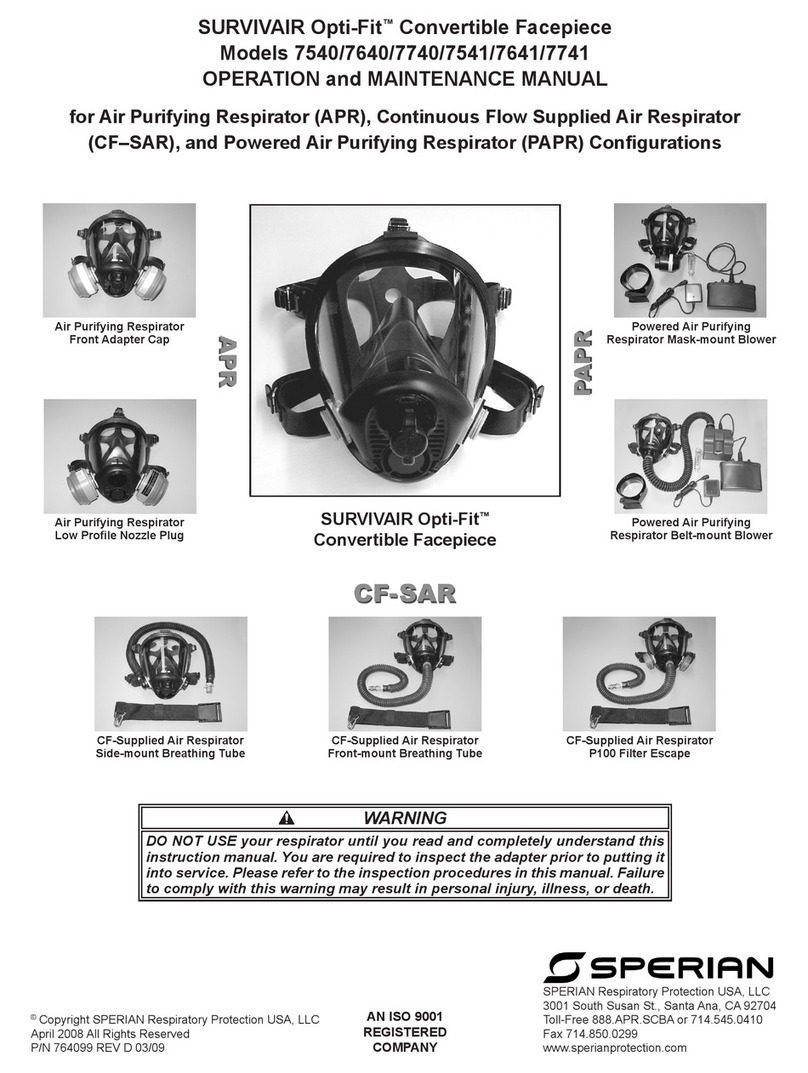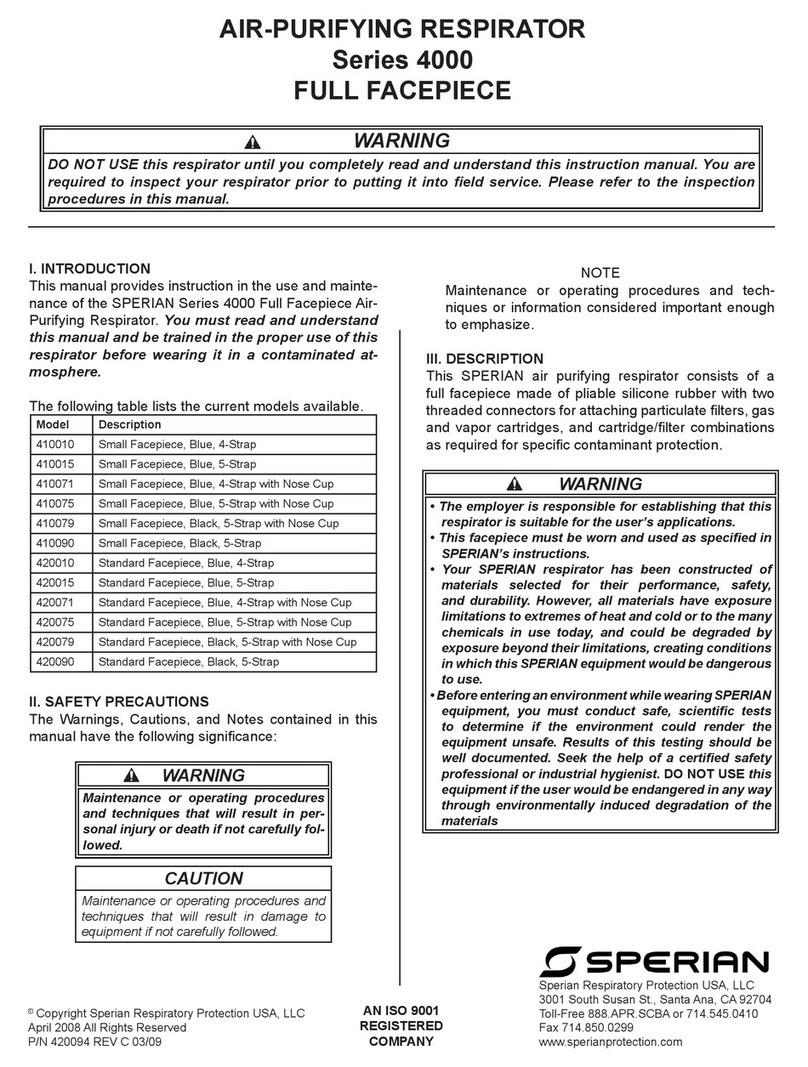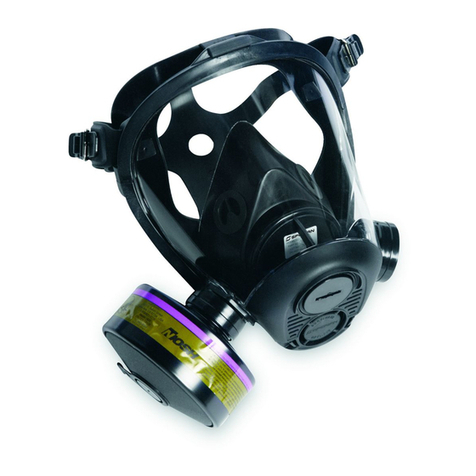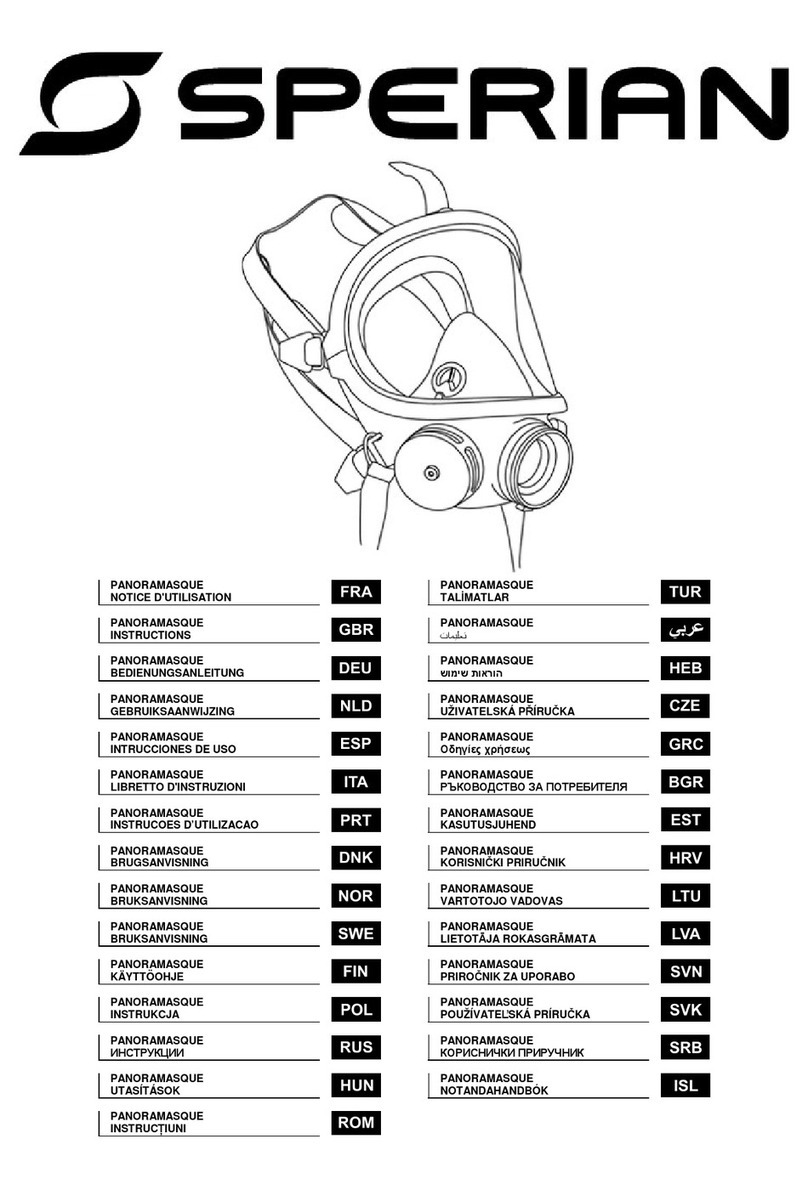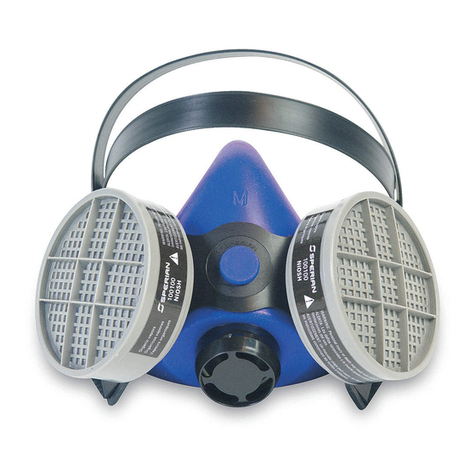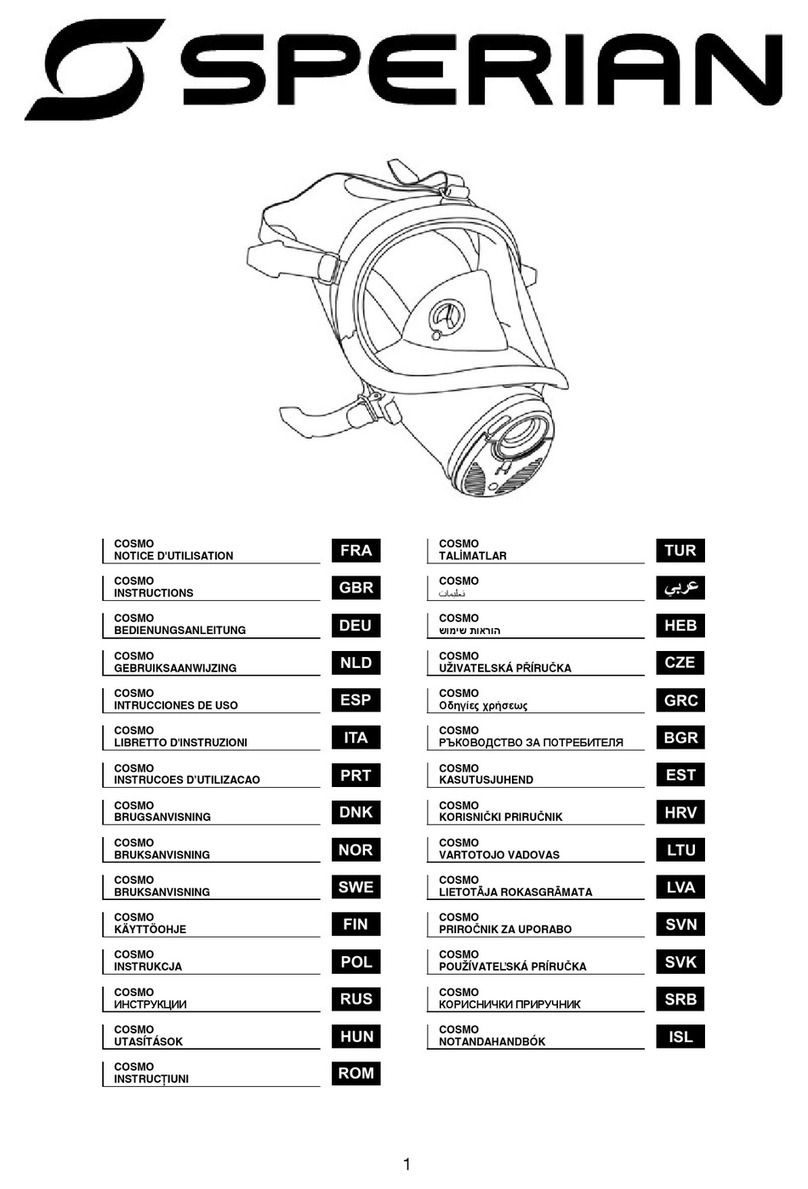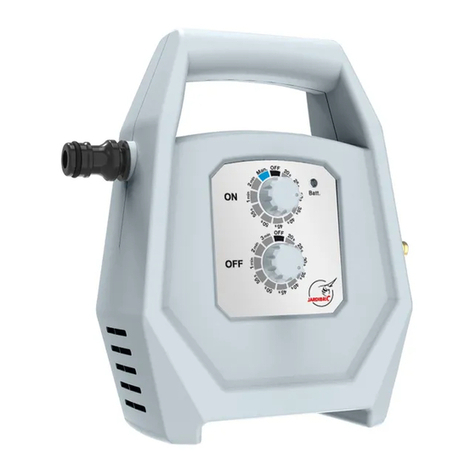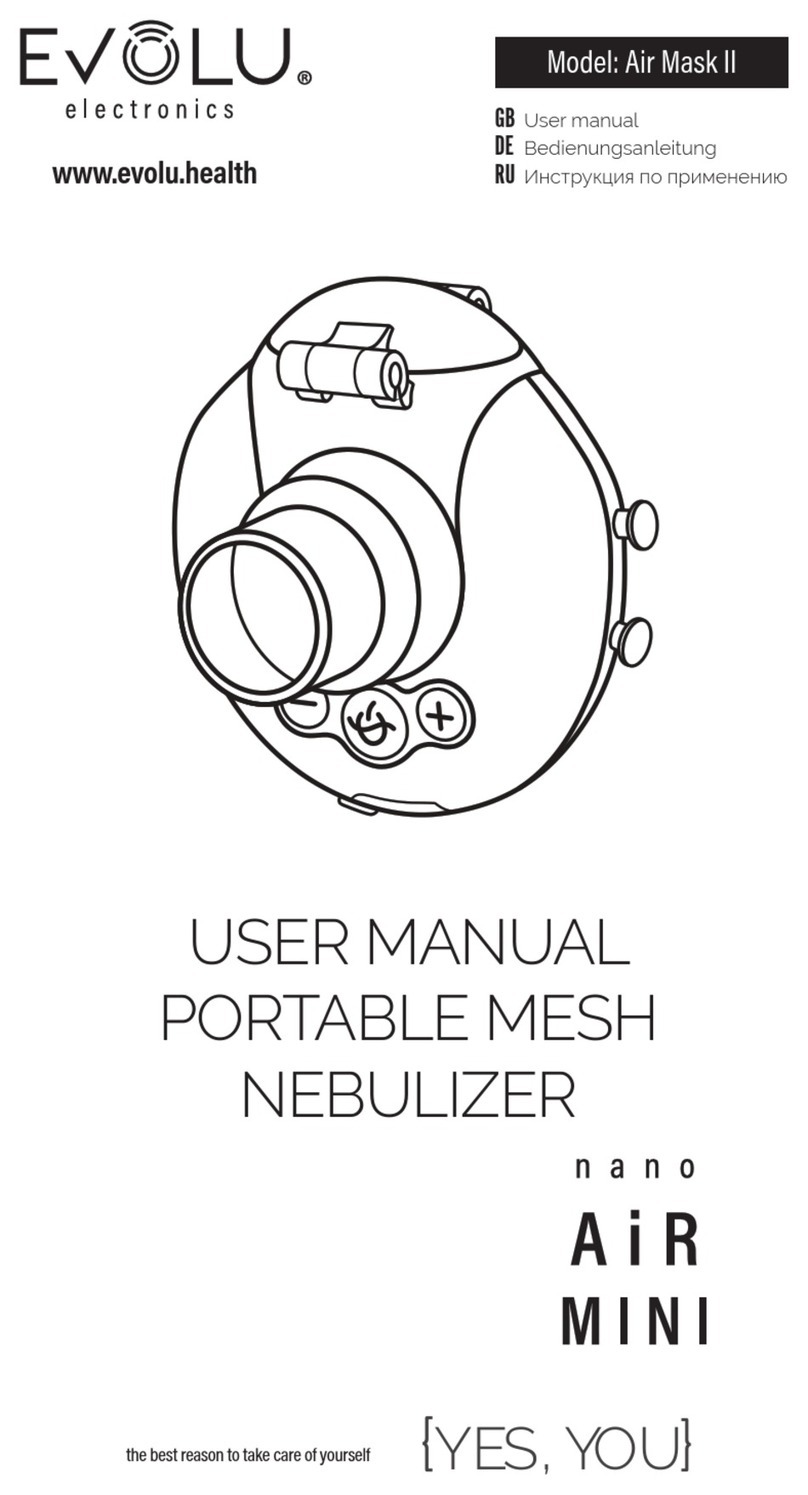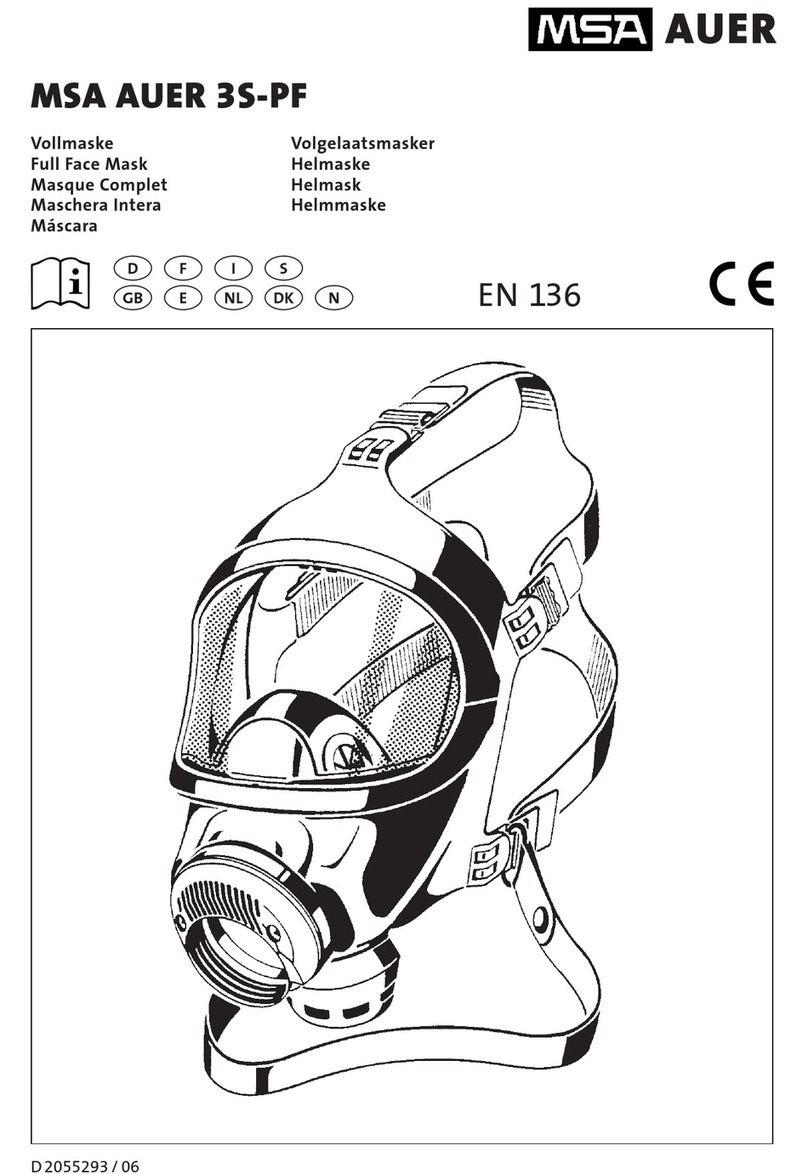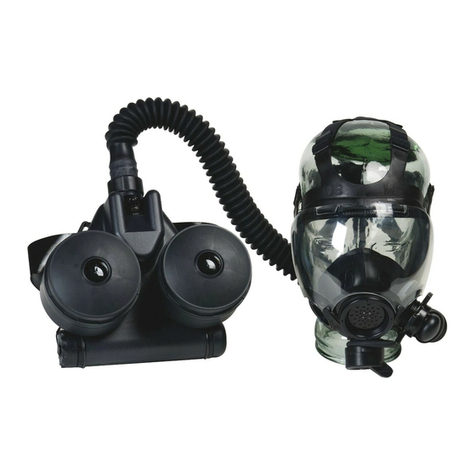
ISTRUZIONI PER L'USO
Come indossare il dispositivo e suo utilizzo
•Strappare il sacchetto ermetico per estrarre il cappuccio, aprendo la custodia (Fig. 1).
•Infilare il cappuccio tenendo il filtro con una mano per posizionare la semimaschera interna.
•La cinghia elastica consente di fare aderire automaticamente la semimaschera interna. (Fig. 2)
•Evacuare la zona contaminata il più rapidamente possibile, senza precipitarsi, respirando normalmente.
(Fig. 3)
Immagazzinaggio
•La durata massima di immagazzinaggio è di 12 anni, conservato nel suo imballaggio di origine non
danneggiato.
Trascorso questo termine, è necessario fare procedere ad un ricondizionamento presso il Servizio
Post Vendita SPERIAN o un altro ente autorizzato.
•Non conservare a temperature oltre la fascia -20°C/+50°C o in un ambiente con un tasso di umidità relativa
superiore al 90%.
•Conservare il cappuccio al riparo dal sole, lontano dalla polvere, nel suo imballaggio d'origine o in un
imballaggio sigillato.
Avvertenze
•Ogni qualvolta si entra in una zona a rischio, verificare prima il coretto stato della custodia:
lacerazioni, sigillo.
•Verificare che non vi siano capelli tra la semimaschera interna e il viso. Barba, basette e
stanghette degli occhiali non consentono una chiusura ermetica.
•Respirare lentamente e regolarmente.
•Non togliere il cappuccio prima di essersi allontanati dalla zona contaminata.
•Quando si toglie il cappuccio, adottare tutte le precauzioni necessarie per evitare l'inalazione
di polveri o di elementi inquinanti depositati sulla superficie esterna del cappuccio stesso.
•Dopo l'uso, è tassativo sostituire il filtro e riporre il cappuccio in un sacchetto chiuso ed
ermetico.
•Se l’ermeticità non è totale, non utilizzare il cappuccio. Consultare le istruzioni di
manutenzione.
•Non alterare né modificare mai il cappuccio.
Istruzioni per la pulizia
•Rimuovere il filtro usato.
•Lavare il cappuccio con acqua tiepida e sapone o in una vasca ad ultrasuoni con il prodotto EPI-US - Ref.:
1779065 in soluzione acquosa al 3% (vedere il libretto di manutenzione per maggiori dettagli). Non utilizzare
solventi organici o prodotti abrasivi per pulire il cappuccio.
•Sciacquare a lungo con acqua corrente pulita, quindi lasciare asciugare in un posto asciutto e aerato.
•Posizionare un filtro nuovo e condizionare il cappuccio in un sacchetto sigillato ermetico.
MANUTENZIONE
Pianificazione della manutenzione
Operazione Cappuccio in uso Cappuccio
immagazzinato
Pulizia, disinfezione Dopo ogni utilizzo N/A
Sostituzione delle valvole Valutazione dell'utente Ogni 6 anni
Ispezione visiva Prima di ogni condizionamento Ogni anno
(esterno della
custodia)
Sostituzione del filtro, condizionamento Dopo ogni utilizzo Ogni 6 anni
Sostituzione della semimaschera interna Valutazione dell'utente Ogni 12 anni
Verificare che il dispositivo sia completo e che non sia danneggiato. In caso di deterioramento o di elementi
mancanti, contattare immediatamente il fornitore. Non si deve mai utilizzare un cappuccio danneggiato o
incompleto.
ISTRUZIONI DI MANUTENZIONE
Soltanto un operatore che ha seguito una formazione SPERIAN è autorizzato ad effettuare le seguenti
operazioni.
Se così non fosse, contattare il Servizio Post Vendita SPERIAN.
Filtro
- Rimuovere la fascetta con un cacciavite.
- Estrarre il filtro dalla semimaschera.
- Sistemare il filtro nuovo nell'ubicazione apposita, spingendolo fino in fondo.
- Aggraffare una fascetta nuova con una tenaglia.
Semimaschera interna
- Tagliare la fascetta (Num. 2) con un tronchese.
- Togliere la semimaschera interna dalla sua sede.
- Sistemare la semimaschera interna nuova prestando attenzione al suo corretto orientamento.
- Inserire una fascetta nuova (Num. 2) nelle 2 fibbie e nel cappuccio.
- Stringere la fascetta attorno al bordo della semimaschera interna (Num. 1) con una tenaglia.
Valvole di inspirazione e di espirazione della semimaschera interna
- Togliere le valvole usate.
- Sistemare le valvole nuove prestando attenzione al loro corretto posizionamento.
SIGNIFICATO DEI SIMBOLI
VEDERE LE ISTRUZIONI PER
L'USO DATA DI SCADENZA TEMPERATURA MASSIMA E MINIMA PER
L'IMMAGAZZINAGGIO UMIDITA’ MASSIMA PER
L'IMMAGAZZINAGGIO
